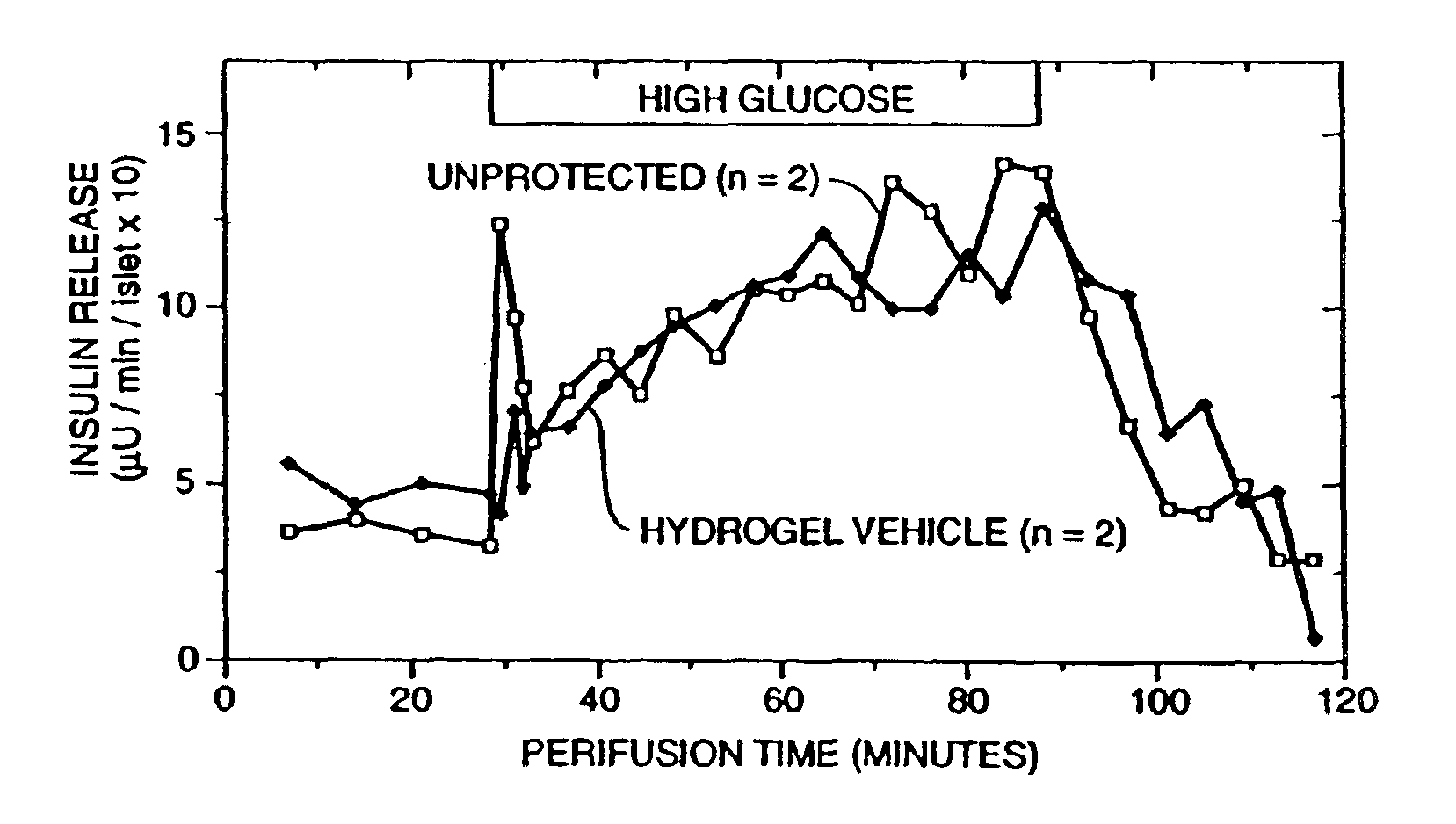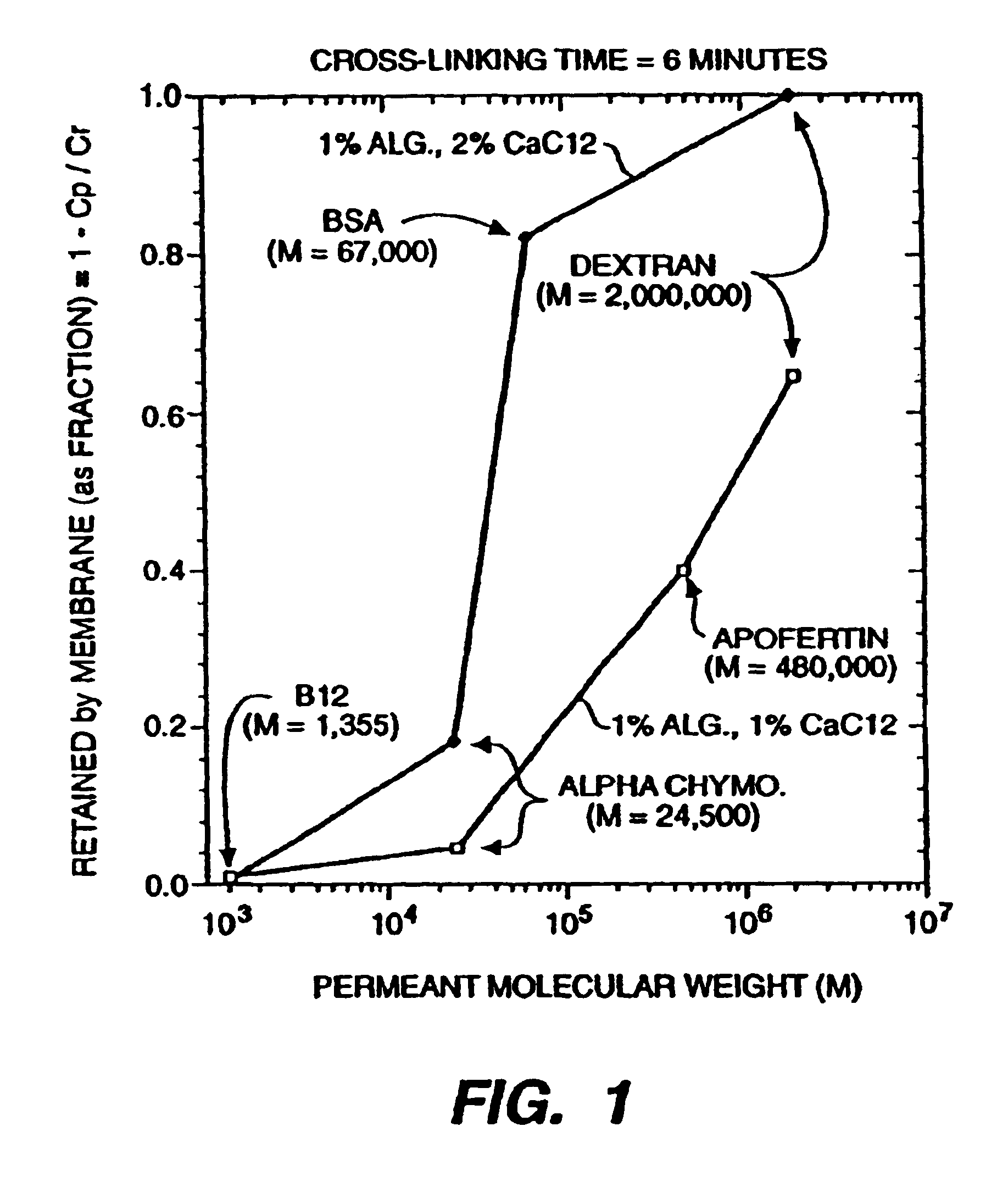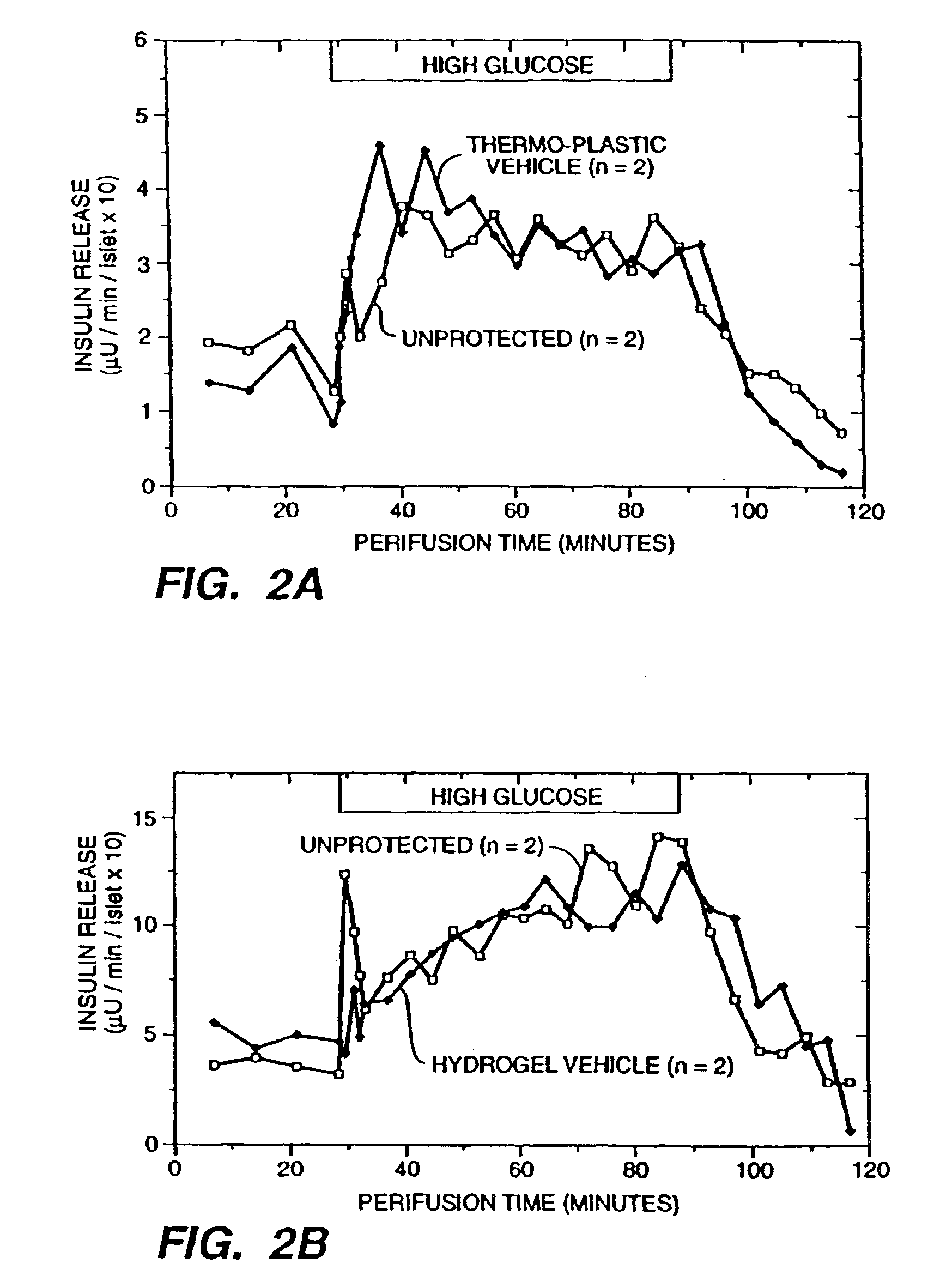Implantable biocompatible immunoisolatory vehicle for delivery of selected therapeutic products
a biocompatible and immunoisolation technology, applied in the direction of cell encapsulation, powder delivery, granular delivery, etc., can solve the problem that the traditional therapeutic approach to the treatment of such diseases cannot compensate for the responsiveness of normal tissue to these fluctuations, and the regimen cannot compensate for the rapid, transient fluctuations in serum glucose levels
- Summary
- Abstract
- Description
- Claims
- Application Information
AI Technical Summary
Benefits of technology
Problems solved by technology
Method used
Image
Examples
example 1
Preparation of Cells For Immunoisolation
[0164]Cells derived from cell lines or from primary sources were maintained in vitro prior to immunoisolation. (In some cases, cells can be stored cryopreserved and then thawed and acclimated in vitro.) Conditions for incubation will vary for specific cell types, but will be readily ascertainable to those skilled in the art following no more than routine experimentation. Islets of Langerhans were obtained by the methods of Scharp et al.(supra) and maintained at 37° C. in an atmosphere of 5% CO2-95% air in a medium consisting of a nutrient broth (e.g., Ham's F12 (GIBCO)), supplemented with serum (e.g., 25% v / v pooled equine donor serum). Islets were maintained in culture, using Petri dishes at 24° C. for predetermined periods of time, according to the method of Lacy, P. E. et. al., Science, 204, pp. 312-313 (1979). Prior to immunoisolation, the islets were collected, concentrated by swirling the Petri dish, resuspended in Hank's balanced salt s...
example 2
Formation of Hydrogel Matrices with Different Molecular Weight Cutoffs
[0165]An alginate thin film made from a solution of 1.0% w / v sodium alginate in H2O was cross-linked for 6 minutes using either (1) a 1.0% (w / v) or (2) a 2.0% (w / v) aqueous CaCl2 solution. The sheet was made by placing a film of liquid on a glass plate using a draw down blade with a 0.2 mm clearance, then immersing in the aqueous CaCl2 solution. A disk was cut from the film using a 47 mm cutting die. The disk was placed in an Amicon stirred filtration cell and used to filter solutions of several marker solutes under a pressure of 10 psi. The concentration of the marker solute was measured in the retentate (Cr=average of initial and final retentate concentration) and similarly in the bulked permeate (Cp). The rejection coefficient of each hydrogel was calculated as follows:
R=1−Cp / Cr
[0166]Thus, a solute which is completely rejected would have a coefficient of 1, and conversely, one which is completely passed throug...
example 3
Formation of a Dual-Matrix Immunoisolatory Vehicle
[0167]A 2% solution of sodium alginate in physiological saline (PS; 150 mm NaCl) was prepared under sterile conditions. A sterile suspension of pancreatic islets in CRML1066 (GIBCO) culture media isolated from adult rats was diluted 1:1 with the alginate solution, for a final concentration of 1% alginate in the islet suspension. The islet suspension was extruded from a single chamber extrusion nozzle into a 1% CaCl2 bath. Once the alginate polyions were crosslinked (approx. 2 min.) and the core containing immobilized islets formed, the core was placed in a 2% alginate solution. The core was then drawn up into tubing with a diameter approximately 500 microns larger then the core and reextruded into a second crosslinking bath of 2% alginate, surrounding the core with a jacket formed of a separate cell-free layer of alginate matrix cross-linked to the core. The thus formed macrocapsule was cylindrical with dimensions of 30 mm length, 80...
PUM
| Property | Measurement | Unit |
|---|---|---|
| volume | aaaaa | aaaaa |
| length | aaaaa | aaaaa |
| length | aaaaa | aaaaa |
Abstract
Description
Claims
Application Information
 Login to View More
Login to View More - R&D
- Intellectual Property
- Life Sciences
- Materials
- Tech Scout
- Unparalleled Data Quality
- Higher Quality Content
- 60% Fewer Hallucinations
Browse by: Latest US Patents, China's latest patents, Technical Efficacy Thesaurus, Application Domain, Technology Topic, Popular Technical Reports.
© 2025 PatSnap. All rights reserved.Legal|Privacy policy|Modern Slavery Act Transparency Statement|Sitemap|About US| Contact US: help@patsnap.com



